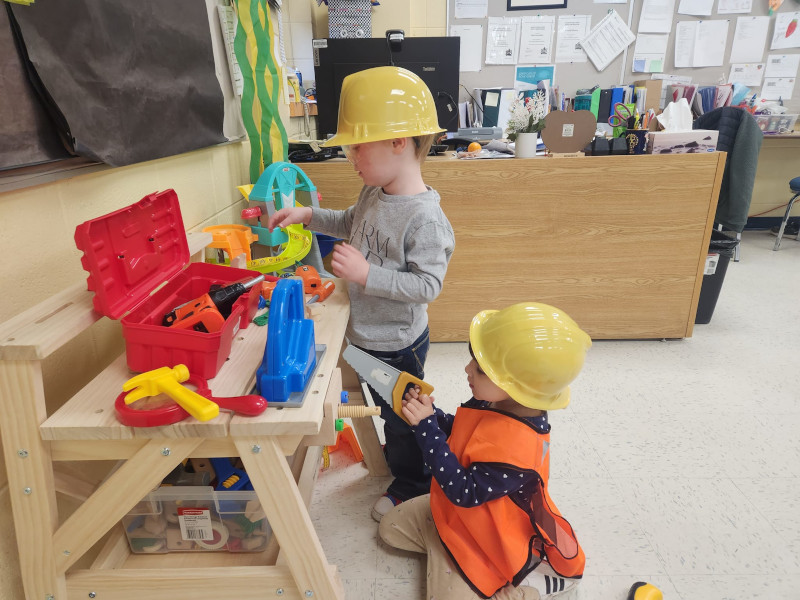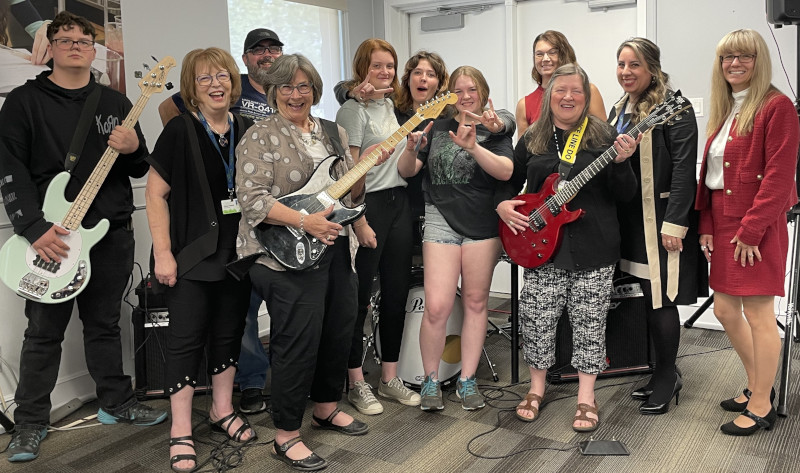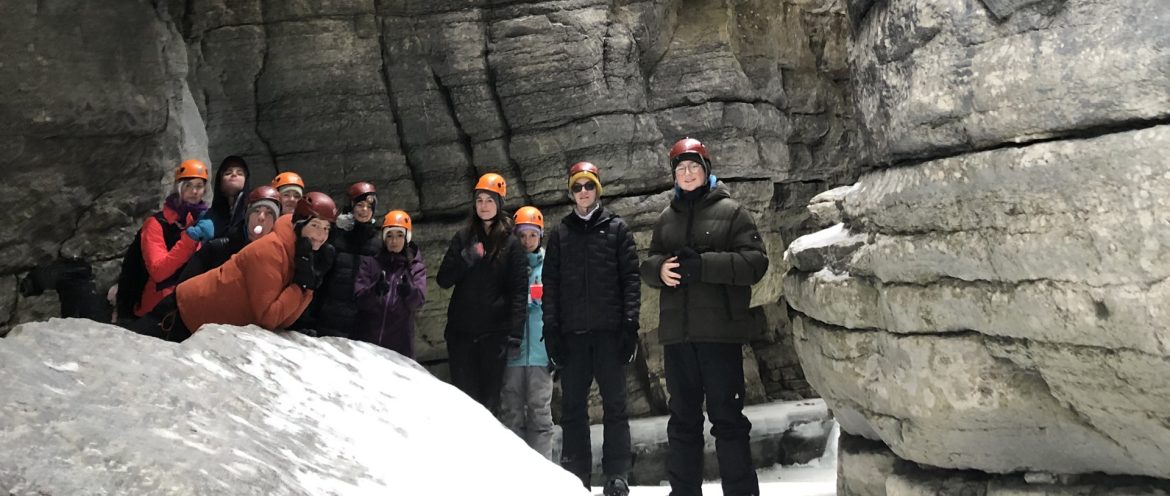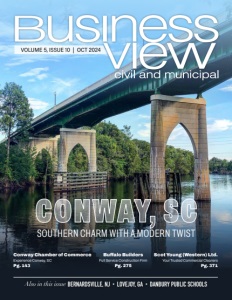Grande Yellowhead District Schools
Redefining Rural Education
A leading school district that is diligently providing world-class education in a rural setting,
Grande Yellowhead District Schools span a vast and diverse expanse in Alberta, covering five distinct zones that range from a national park to industry towns. The school division spans four and a half hours by car from end to end, offering unique educational experiences shaped by the rugged landscapes and rural communities it serves.
This is not your typical school district; here, students might be kept inside during recess because a bear has wandered onto the playground, or they might start their day with early morning chores on a farm before catching the bus to school. The district’s vision is grounded in this unique rural reality, nurturing a learning environment as expansive and varied as the territory it covers.
Superintendent Carolyn Lewis outlines the four priorities guiding the board and its team: “Student learning is our number one priority,” she says without hesitation. Alongside this is excellence and continued development for students and leadership, teaching, and support staff. Given the division’s vast geographical spread, Lewis stresses the importance of stakeholder engagement. “We live in a vast landmass,” she explains, emphasizing the need for constant engagement with communities spread across five zones.
System health and wellness is the fourth priority. It’s a broad focus, encompassing the well-being of both staff and students. In the current climate, post-Covid, this priority resonates more than ever. “There have been a lot of issues around the world,” Lewis points out, acknowledging that the challenges faced by the division are mirrored globally. The board, she says, has remained steadfast in its adherence to core values such as rigor, integrity, courage, and compassion, which underpin every decision and initiative.
Grande Yellowhead District Schools’ mission is clear-cut: “Every student will graduate with the knowledge and skills to pursue post-secondary goals,” Lewis states. Yet, this isn’t just about steering students toward university. The term “post-secondary goals” is broad, encompassing apprenticeships and direct entry into the workforce. It is a pragmatic understanding of the diverse futures awaiting students, shaped by the region’s robust mining, oil and gas, forestry, farming, ranching and tourism industries.
Lewis emphasizes that parents are the primary advocates for their children, highlighting the importance of a “welcoming, caring, respectful, safe, and inclusive learning environment” as a fundamental right. She contrasts rural and urban learning, drawing from her experience in Edmonton Public Schools, and notes how rural students face unique challenges, like canceling recess due to bears. Lewis stresses that “learning is a shared responsibility between students, parents, schools, and communities,” promoting a holistic approach that integrates education with nature and community, preparing students for academic success and active citizenship.

Early Learning and STEM Education
Grande Yellowhead District Schools significantly emphasizes early childhood education, viewing it as a crucial foundation for long-term academic success. Lewis highlights the importance of early literacy and numeracy as top priorities for the district.
“All our teachers are trained in a program called Write to Read,” she explains. This initiative targets the early years, covering kindergarten and grade one, and extends to grade two for French immersion students. The program focuses on foundational reading skills and includes a testing system that provides insight into students’ progress.
“It aligns perfectly with the government of Alberta Education’s dashboard,” she adds, noting that the district has been ahead of provincial mandates by implementing this system for the past seven years. Their early adoption of this approach has yielded impressive results, with students in their elementary schools consistently meeting or exceeding provincial averages in government testing programs.
Board Chair Dale Karpluk further emphasizes the district’s early learning initiatives. “The earlier we can build skills and work with our students, the better off we are in later grades,” she notes. Drawing on her experience as a former principal, she stresses the value of consistent professional development for teachers.
“We have had consultants consistently come in and work with our staff in an ongoing process to enhance teaching practices,” she says. The influence of these consultants extends beyond elementary grades. “The physics teacher does not just teach physics,” Karpluk says. “The students have to know how to read the physics question to do it.” By integrating literacy into every subject, the district ensures that all teachers contribute to building students’ reading skills.
Lewis also discusses integrating STEM and STEAM (Science, Technology, Engineering, Arts, and Mathematics) into early education. “We have a very high-flying technology department in our school division,” she says, outlining a comprehensive approach that includes both technical and educational components. A dedicated team of teachers works with students from kindergarten to grade 12, ensuring high-quality technology experiences from the earliest grades.
Middle School Structure and Expanding High School Opportunities
In a district as geographically diverse as Grande Yellowhead, middle school organization presents unique challenges as only some communities follow a traditional middle school model. “Some of our schools are configured a little differently,” Karpluk explains.
In some areas, there’s a distinct middle school; in others, students might transition directly from elementary to high school. Regardless of the setup, students in these grades get an early taste of Career and Technology Studies (CTS) programs. “They get into our shops and our labs,” she says, allowing them to explore areas like home economics and other experiential courses before they reach high school.
Lewis adds that the lack of a one-size-fits-all model allows for flexibility in school structure. In some zones, elementary schools go from kindergarten to grade seven, while high schools start at eight and go up to twelve. “It’s different in each way,” she notes, but this variety makes the district adaptable to its unique environment.
“We bring in a lot of community members who are very committed to sharing their knowledge,” Lewis says. These professionals conduct welding, carpentry, and science workshops, enriching the students’ learning experiences. The district’s advanced focus on technology also extends into these grades. “AI is massive for us,” Lewis remarks, pointing out that their tech team has been engaged with artificial intelligence since its early days.

For upper grades, the district emphasizes practical skills and post-secondary preparation through a modified dual credit system. “We have three schools that offer types of dual credit programming,” Lewis notes, with some offering trades training led by certified professionals, like a welding Journeyman in Grande Cache. Despite the lack of a nearby college, students gain hands-on experience. Grand Trunk High School also offers an aeronautical program featuring a flight simulator and airport visits. “Our students have now been involved in the aeronautical program for three years,” Lewis says, emphasizing its success and growth.
Infrastructure Investments
Grande Yellowhead has also made significant investments in its physical infrastructure, aligning with its focus on modernizing education. “We have a very proud history,” Lewis shares, mentioning the new junior-senior high school in Jasper that opened nine years ago. This state-of-the-art facility, known for its environmentally friendly construction, was made possible through a partnership with a francophone school division in Edmonton.
A significant project was the full modernization of Grande Cache Community High School, completed in 2017 with government funding and strategic fiscal management. “We’ve had very strong money management,” Lewis notes, allowing for such developments. Grand Trunk School is undergoing a similar transformation into a K-12 school, with the building being entirely rebuilt. Strong community ties, including a library, adult learning center, and double gym, support the project. “The board contributed $3 million,” Karpluk says, emphasizing the investment in education and community recreation needs.
The district’s Superintendent’s Youth Council allows students to propose and implement school improvement projects. Katie Brook, a three-year council member, calls it “a great program giving a voice to students.” Last year, the council advocated for vape detectors in all high schools. Karpluk emphasizes that the initiative is “totally student-driven” and an authentic way for students to contribute. The council also helps students develop skills in data analysis, consensus building, and project pitching. “They have to come up with a project, research it, and pitch that idea to their principals,” she explains.
Future Priorities: Empowering Students and Strengthening Rural Education
As Grande Yellowhead District Schools look towards the future, its strategic priorities center on enhancing educational outcomes and ensuring students have the skills and knowledge to thrive beyond graduation. Lewis articulates a vision where location does not define the quality of education. “Brains do not know postal codes,” she asserts, highlighting the district’s belief in providing a world-class education to all students, regardless of their rural setting.
Over the next three years, she anticipates building on the “fabulous results” seen in provincial achievement tests, diploma exams, and feedback from parents, students, and teachers. While the kindergarten to grade nine program is performing well, the emphasis is now on enhancing high school performance. “Our big focus now is on high school,” Lewis says, specifically improving attendance and academic outcomes. This includes a targeted push on STEM education and career readiness, ensuring students fully know their options beyond graduation.
On her part, Karpluk reflects on the district’s rural identity as both a point of pride and a guiding principle for its educational mission. “We’re proud to be rural, and we’re proud to be a public school division,” she says. After exploring post-secondary options, there’s a hope that students will return to their communities, contributing to the vibrancy and strength of rural life. “The rural students, for the most part, appreciate the benefits of growing up in the rural areas,” she notes. The vision is for students to graduate ready to pursue their dreams, equipped with the understanding that their rural upbringing is an asset, not a limitation.
At the heart of these efforts is a shared belief in the transformative power of education. “It’s the most important work in the world,” Karpluk affirms, reflecting on the district’s efforts to prepare students for a future filled with possibilities. As Grande Yellowhead District Schools forge ahead, excellence and innovation within a rural context remain a guiding light, driven by the conviction that educating youth is indeed the most significant investment in our collective future.
AT A GLANCE
Grande Yellowhead District Schools
What: A progressive rural school division offering innovative education
Where: Alberta, Canada
Website: https://www.gypsd.ca/our-division



